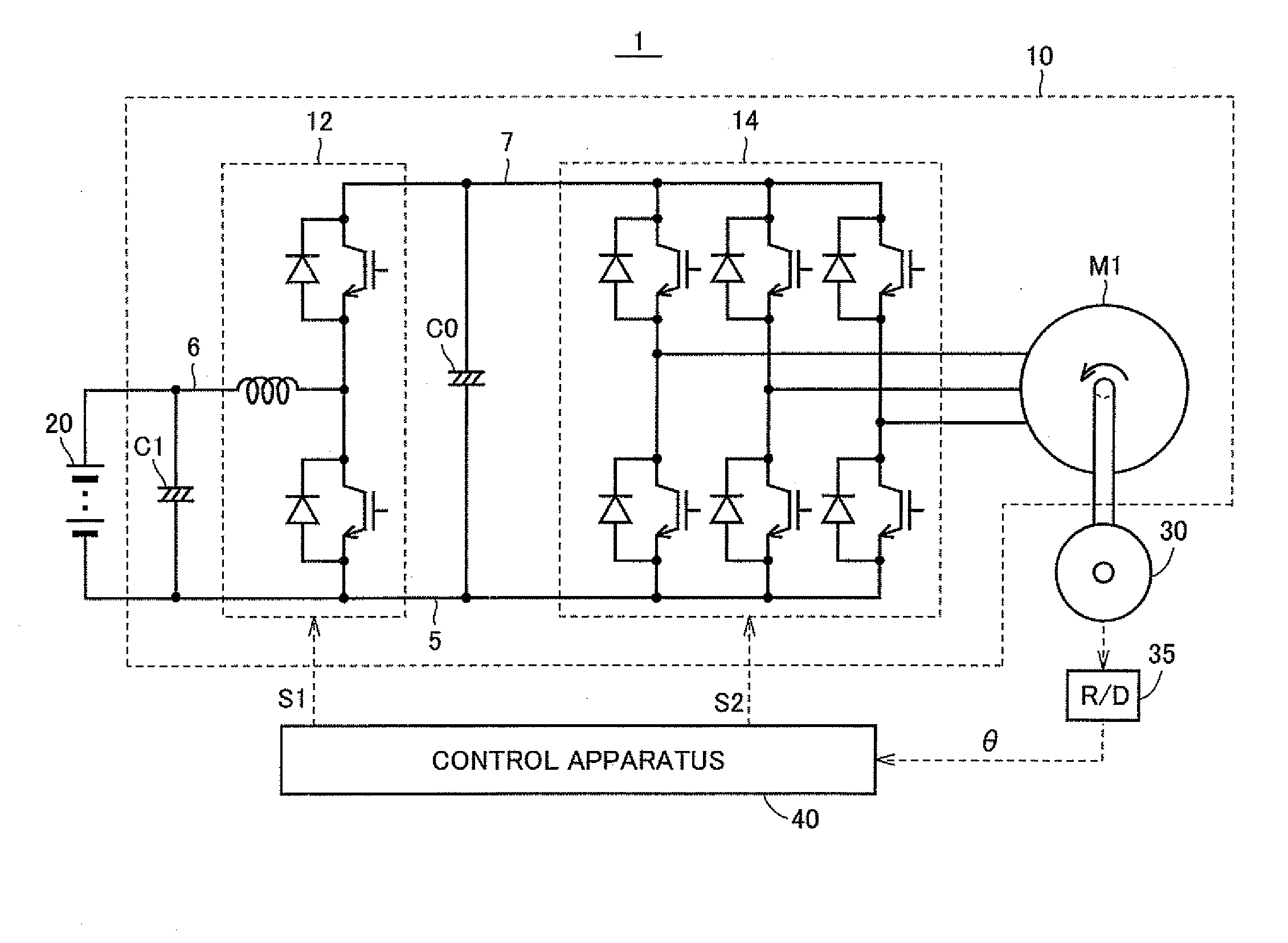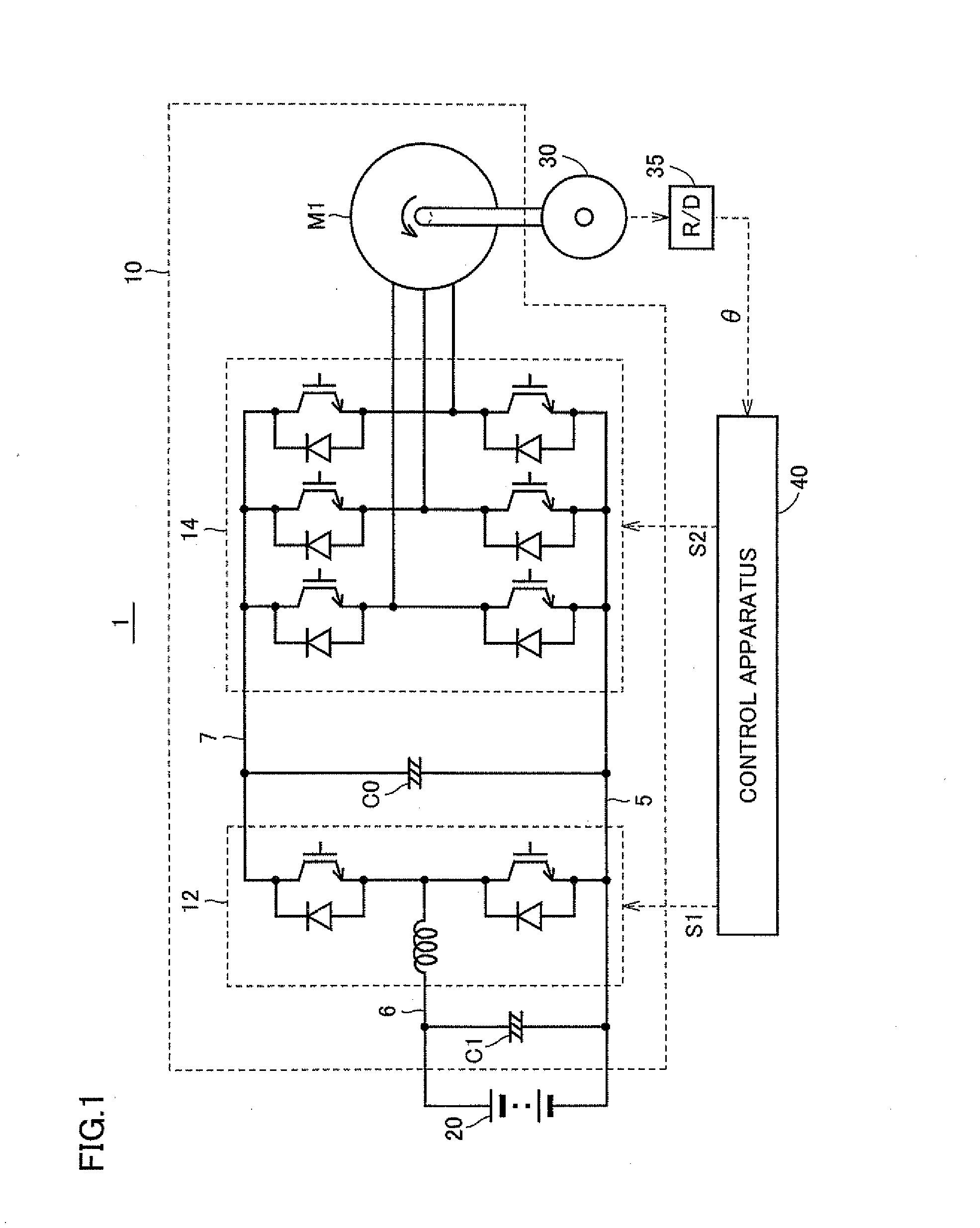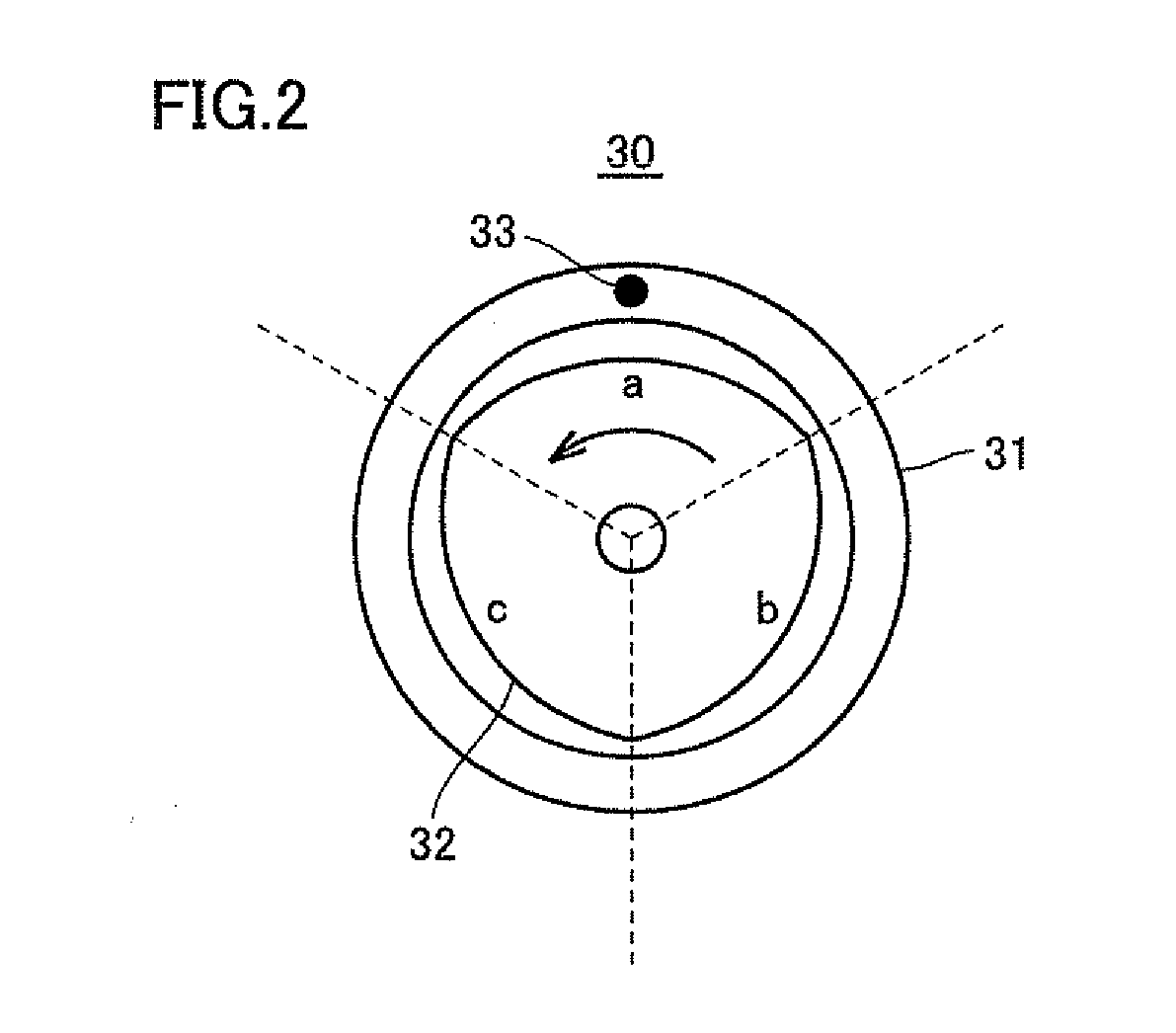Rotation angle calculation apparatus and rotation angle calculation method
a technology of rotation angle and calculation apparatus, which is applied in the direction of electronic commutators, motor/generator/converter stoppers, dynamo-electric converter control, etc., can solve the problems of relative long time lag corresponding and the inability to correct errors as appropriate, and achieve the effect of deteriorating the accuracy of error correction
- Summary
- Abstract
- Description
- Claims
- Application Information
AI Technical Summary
Benefits of technology
Problems solved by technology
Method used
Image
Examples
first modification
[0083]In the above-described first embodiment, rotation speed variation α is used as the transition index. Instead of rotation speed variation α, a variation per unit time of the torque of motor M1 (hereinafter referred to as “torque variation β”) may be used.
[0084]FIG. 8 is a diagram illustrating a correspondence between torque variation β and the way to correct an error, Where torque variation β is large, a variation in electric current flowing in motor M1 is also large, resulting in a large variation in leakage magnetic flux of motor M1. Since resolver 30 generates an electrical signal in accordance with the rotation angle of motor M1 based on a change in magnetic flux as described above, detected angle θ is influenced by magnetic noise such as leakage magnetic flux of motor M1. Therefore, if torque variation β is large, a variation of error Errθ is also large due to the influence of the large torque variation.
[0085]In view of the above, as shown in FIG. 5, the normal correction ...
second modification
[0087]While the transition index in the above-described first embodiment is rotational speed variation α, variation per unit time of a voltage that is input from converter 12 to inverter 14 (hereinafter referred to as “voltage variation y”) may be used instead of rotation speed variation α.
[0088]FIG. 9 is a diagram illustrating a correspondence between voltage variation γ and the way to correct an error. Where voltage variation γ is large, a change in switching period of converter 12 is also large, resulting in a large change in electrical noise such as switching surge.
[0089]As described above, resolver 30 generates an electrical signal in accordance with the rotation angle of motor M1 and communicates the electrical signal with R / D circuit 35. Detected angle θ is therefore influenced by electrical noise such as switching surge.
[0090]Therefore, if voltage variation γ is large, a variation in error Errθ is also large due to the influence of the large voltage variation.
[0091]In view o...
third modification
[0093]In the above-described first embodiment, rotation speed variation α is used as the transition index. Instead of rotation speed variation α, a carrier frequency f used for controlling switching of inverter 14 may be used.
[0094]Here, carrier frequency f will be described. Control apparatus 40 controls inverter 14 by means of pulse width modulation (hereinafter also referred to as “PWM”) control. Under this PWM control, the switching devices of inverter 14 are turned on or off based on a voltage comparison between a carrier signal and a voltage command, to thereby apply a pulse width modulated voltage from inverter 14 to motor M1. Therefore, the switching period of inverter 14 depends on the frequency of the carrier signal. This frequency of the carrier signal is “carrier frequency f”. Control apparatus 40 changes carrier frequency f depending on the state of drive apparatus 10 or the like.
[0095]FIG. 10 is a diagram illustrating a correspondence between carrier frequency f and th...
PUM
 Login to View More
Login to View More Abstract
Description
Claims
Application Information
 Login to View More
Login to View More - R&D
- Intellectual Property
- Life Sciences
- Materials
- Tech Scout
- Unparalleled Data Quality
- Higher Quality Content
- 60% Fewer Hallucinations
Browse by: Latest US Patents, China's latest patents, Technical Efficacy Thesaurus, Application Domain, Technology Topic, Popular Technical Reports.
© 2025 PatSnap. All rights reserved.Legal|Privacy policy|Modern Slavery Act Transparency Statement|Sitemap|About US| Contact US: help@patsnap.com



